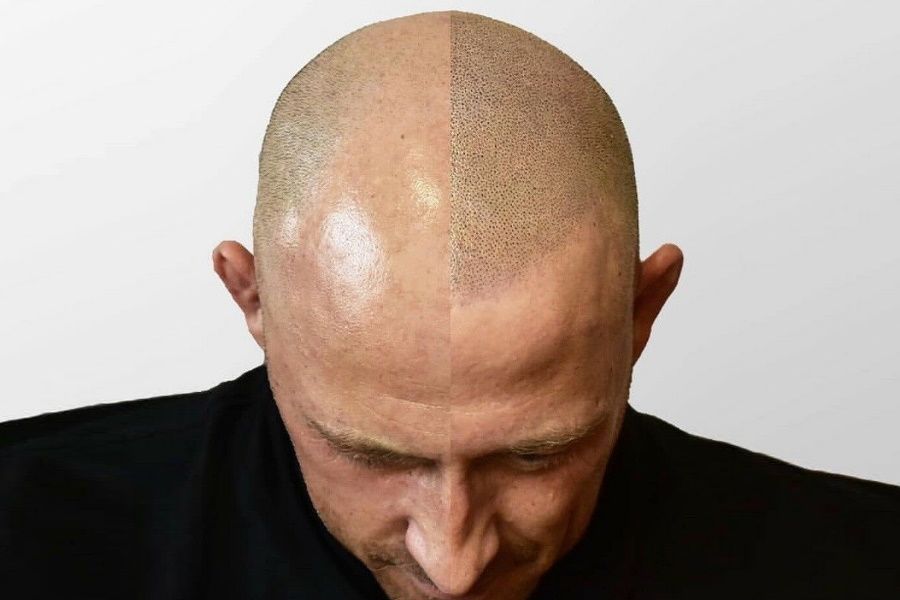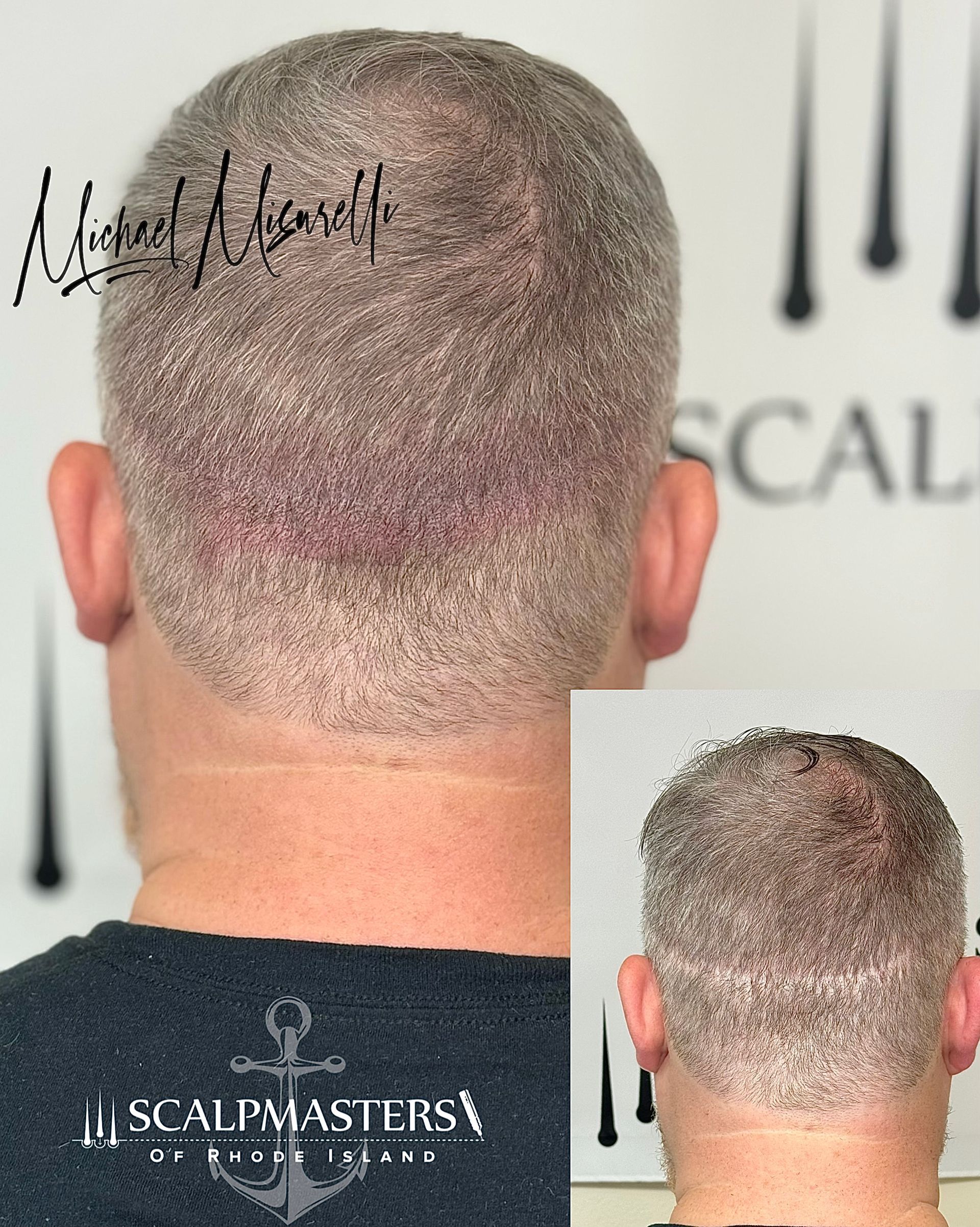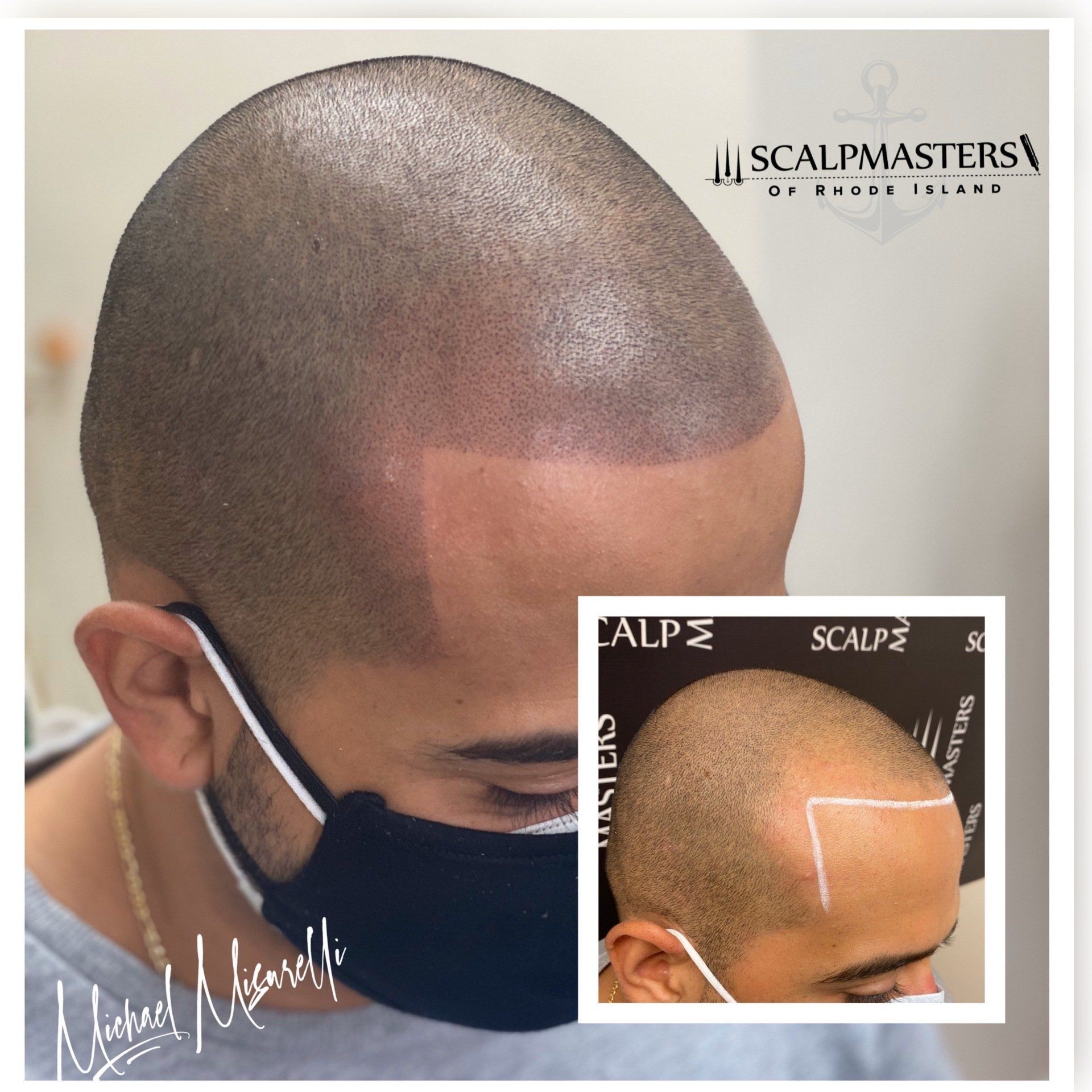Scalp Micropigmentation vs. Hair Transplants: Which is Right for You?
In the quest to overcome hair loss, two popular hair treatments often come up in conversation: scalp micropigmentation and hair transplants. Both procedures present potential solutions to premature balding and thinning hair, providing hope for men and women alike. Below, we will compare and contrast these two hair loss treatment methods, providing insights that can help you make an informed decision.
What do you need to know about each option?
What Is Scalp Micropigmentation?
Scalp micropigmentation (SMP) is a non-invasive cosmetic procedure that involves the application of natural pigments onto the epidermis layer of the scalp. This creates a hair tattoo that closely resembles a fresh, close-shaven buzz cut or adds density to thinning hair. SMP is a great option for those seeking a hassle-free, immediate solution to hair loss, as it doesn't rely on the existence of healthy hair follicles.
In SMP procedures, a skilled technician uses specialized equipment to create the illusion of hair follicles on the scalp. This technique can give the appearance of a full, natural hairline, irrespective of the extent of hair loss. SMP offers a high success rate, provides immediate results, and requires minimal upkeep.
Finally, SMP isn't limited to people with a completely bald head. It can also add density to thinning hair and blend seamlessly with your existing hair. Whether you're dealing with a receding hairline, diffuse thinning, or complete baldness, SMP can deliver a realistic and long-lasting solution.
What Are Hair Transplants?
Hair transplants, a widely recognized hair loss solution, involve moving healthy hair follicles from one part of the scalp (usually the back or sides) to the balding area. The transplanted hair grows as natural hair would, allowing the person to style their hair as they please after the recovery period. Hair transplant surgery can be a successful option for those who desire a more traditional look and have sufficient donor hair.
Scalp micropigmentation offers long-lasting results without downtime or recovery period.
Hair transplant surgery involves two main techniques: Follicular Unit Transplantation (FUT) and Follicular Unit Extraction (FUE). In both methods, healthy hair follicles are transplanted to the balding area. After a healing period, the transplanted hair begins to grow, potentially providing a permanent solution to hair loss.
However, hair transplant surgery isn't suitable for everyone. The procedure requires an ample supply of donor hair, a significant financial investment, and time for recovery. As with any surgery, it carries potential risks such as scarring, infection, and the possibility of the transplanted hair not taking root.
Potential Problems With Hair Transplants
While hair transplants can be an effective solution for some, they're not without their potential problems. First, the success of a hair transplant hinges greatly on the quality and quantity of the donor hair. Without enough healthy hair follicles, the results might not meet expectations.
Next, hair transplant surgery can lead to scarring, especially in FUT procedures where strips of scalp are removed. This scarring can limit hairstyle options in the future. Lastly, while the idea of permanent hair growth is appealing, not all transplanted hair will take root. Some individuals may require multiple procedures to achieve desired results, which can be financially burdensome.
Moreover, the transplanted hair is susceptible to future hair loss, particularly for those with a genetic predisposition to male or female pattern baldness. Transplanted hair can thin over time, which might necessitate further procedures or treatment options. It's important to discuss these considerations with a hair loss specialist to make an informed decision. While hair transplants and scalp micropigmentation can be effective, SMP offers its own benefits as well.
The Top Benefits of Scalp Micropigmentation
Fortunately, there is an alternative to hair transplants. Scalp micropigmentation offers several advantages:
- Non-invasive: Unlike hair transplants, SMP is a non-invasive procedure that requires no cuts, incisions, or stitches.
- High success rate: SMP has a higher success rate compared to hair transplants as it doesn't rely on the health of existing hair follicles.
- Immediate results: SMP provides immediate results, with most clients seeing full results after just a few sessions.
- No scarring: SMP does not cause the type of scarring associated with hair transplants.
- Less maintenance: With SMP, you don't have to worry about ongoing hair loss, as the hair tattoo maintains its appearance over time.
- Affordable: Compared to hair transplants, SMP is a more affordable option that offers lasting results.
Choosing SMP over hair transplants can save you from potential issues such as scarring, post-operative discomfort, and the uncertainty of whether the transplanted hair will take root.
Contact Scalpmasters of Rhode Island for the Top SMP Services
If you're considering a reliable and effective hair loss solution, Scalpmasters of Rhode Island is ready to assist. Our team of skilled practitioners specializes in scalp micropigmentation procedures, offering an alternative to hair transplants that's designed to meet the needs of individuals dealing with various forms of hair loss.
With Scalpmasters, you're not just getting a cosmetic procedure; you're investing in restored confidence and a fresh new look. Don't let hair loss hold you back any longer. Reach out to Scalpmasters of Rhode Island today, and begin your journey towards a more confident you.
Learn More
What's New
Latest Hair Loss Solutions & Guides




